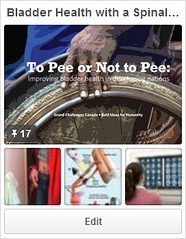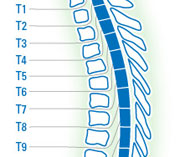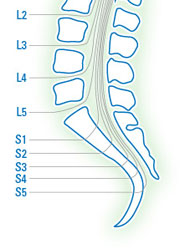Bladder Management
Determined2Heal Tips:
The urinary system removes waste material from the bloodstream. Unfortunately, now that you have a spinal cord injury you may no longer be able to control your urinary system voluntarily. You must rely on some form of catheterization.
Click Here — Learn more about bladder and watch thousands of SCI videos on SPINALpedia!
|
Click Here — Check out our Bladder with a SCI Pinterest board |
Click Here — Check out our Staying Hydrated with a Pinterest board |
Kidney failure is the leading cause of death for people with spinal cord injuries. Many people are reluctant to drink a lot of water because of the hassle of catheterization. If you don’t drink a lot of water, you will get dehydrated and your kidneys will begin to deteriorate. You need water to heal.
The goal is to drink a lot of water and get on a consistent catheterization schedule. For most people, every four hours is ideal, but you will get a feel for what is best for you. The normal bladder holds between 300-500 cc of urine (10-16 ounces).
Each catheterization should yield this amount of urine. Frequency of catheterization varies with amount of water intake. If the bladder fills up with too much urine, it could cause you to experience autonomic dysreflexia (AD). (Increased blood pressure, sweating)
The majority of AD episodes are because of bladder management issues. It may be a kink in your urethral catheter or sediment buildup in your suprapubic tube, which causes the bladder to overfill. The only ways to resolve the AD is to empty the bladder via catheterization or irrigation of the suprapubic tube.
There are several different types of catheterization
Intermittent catheterization is when you empty your bladder approximately every four hours by inserting a tube through your urethra into your bladder. Work with your urologist to help determine your frequency of intermittent catheterization.
An indwelling urethral catheter goes through the urethra into the bladder and is held there with a balloon and drains straight into a catheter bag. It should be changed every six weeks or less.
Some spinal injuries spare the sacral nerves which control the bladder. These patients may use a condom catheter to collect urine. It allows the urine to drain into a leg bag or an overnight collection bag. It helps to collect the urine that is leaking out of the bladder through the urethra.
Skin problems can occur on the penis when the catheter is not fitted properly. Only males can use a condom catheter. Cleaning the penis each time the catheter is changed is extremely important. The external condom catheter must be changed every day.
I use an indwelling catheter, called a suprapubic tube. It’s a tube that goes straight into my bladder through a hole in my lower abdomen (just below my belly button) and is held in place by a small balloon. Since this tube is not in the urethra, there is little risk of a stricture (scar) in the urethra.
However, there are many risks associated with this type of catheter, so you should talk to your urologist to determine if this best suits you. The suprapubic tube must be changed every 30 days or sooner using a sterile technique.
I like the suprapubic tube because it allows me to drink as much water as I want throughout the day without worrying about catheterization. Because it is an open hole to the body, infection can occur.
Reasons for maintaining your bladder care program:
-
If too much urine remains in your bladder, the pressure may back up into your kidneys and damage them.
-
If urine remains too long in your bladder, it may cause infection. Bladder infection can lead to kidney damage, serious illness, or autonomic dysreflexia.
-
If the urine is too concentrated, solid crystal materials (stones) can form in the urinary system. These stones can block the flow of urine and can cause damage to the urinary tract.
-
Regular attention to your bladder management program will prevent embarrassing accidents and serious medical issues. It will also allow you to drink as much water as your body needs to stay healthy.
-
Keeping all materials including your skin as clean as possible will keep your bladder healthy and prevent infection. Make sure hand washing is a regular part of your catheterization program.
-
Minimize your use of alcohol, caffeine, and soft drinks because they may dehydrate you. If you get dehydrated, your urine will become more concentrated and crystals will form. Too many crystals will develop into stones.
-
Having a proper diet can also help prevent urinary stones. Dairy products should be used in moderation, because an excess of calcium could possibly cause stones.
-
It’s important with any form of catheterization to keep the drainage bag lower than the level of the bladder so the bladder drains well.
Urinary Tract Infection
|
Causes |
Signs |
|
|
If you experience any of these symptoms, contact your urologist immediately.
The Paralyzed Veterans of America have a great bladder management book:
Bladder Management for Adults with Spinal Cord Injuries: A clinical practice guideline or health-care providers click here













